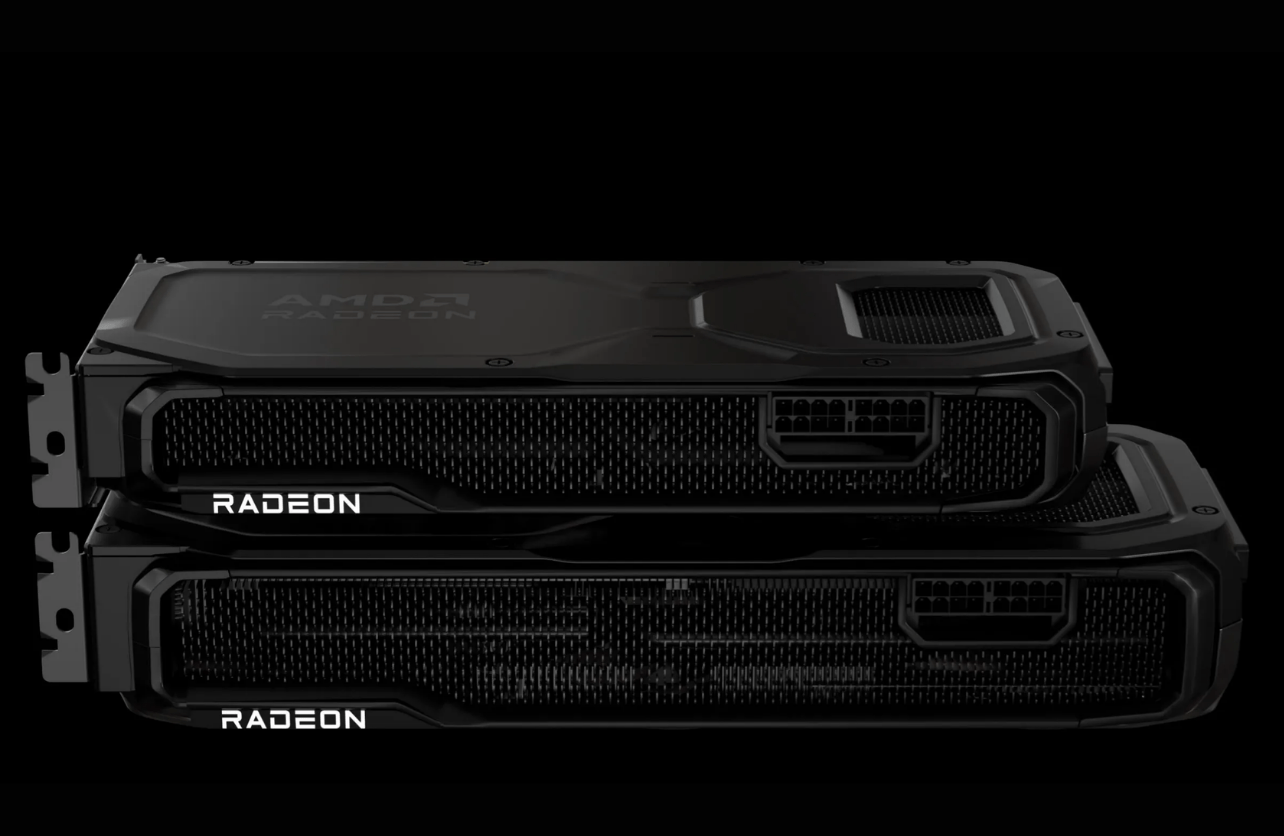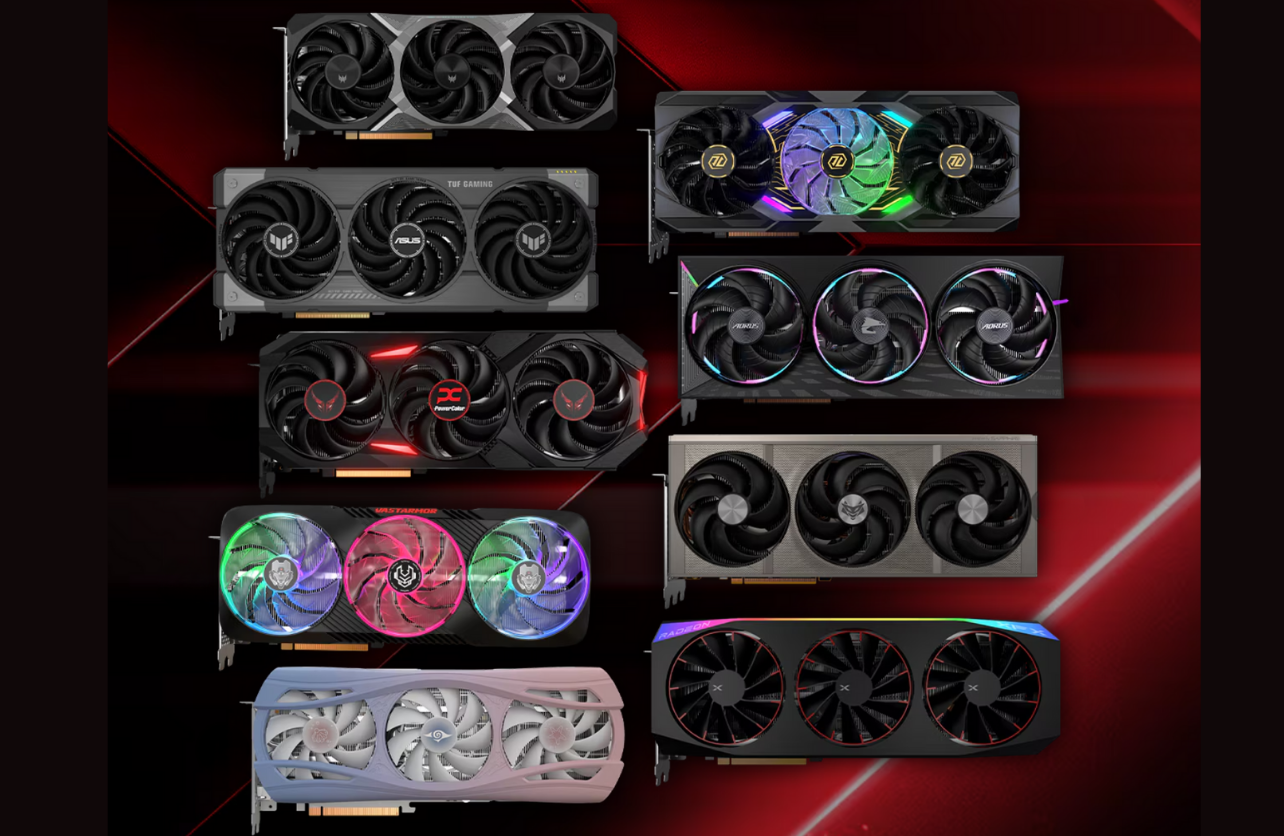AMD Unveils the RX 9070 Series: Is This Generation Finally Good Enough to Compete with Nvidia?

For years, AMD has been fighting an uphill battle against Nvidia in the high-performance GPU market. While AMD’s graphics cards have consistently provided competitive pricing and raw power, Nvidia’s dominance in ray tracing, AI-driven upscaling, and software optimizations has kept it a step ahead. But with the release of the Radeon RX 9070 and RX 9070 XT, AMD is making a bold statement—one that could finally close the gap.
Boasting the latest RDNA 4 architecture, these GPUs bring significant improvements in performance, efficiency, and AI-assisted rendering. But the question remains: Can the RX 9070 series truly compete with Nvidia’s upcoming RTX 50-series? Let’s break it down.
RX 9070 & RX 9070 XT: The Specs That Matter

AMD’s new RX 9070 and RX 9070 XT are built for high-performance gaming, offering improved clock speeds, memory bandwidth, and AI acceleration. Here’s a breakdown of the two models:
Radeon RX 9070 XT: The Flagship of the Mid-Range
- Compute Units: 64
- Stream Processors: 4,096
- AI Accelerators: 128
- Base Clock: 2,400 MHz
- Boost Clock: Up to 2,970 MHz
- Memory: 16GB GDDR6
- Memory Interface: 256-bit
- Infinity Cache: 64MB
- Typical Board Power: 304W
- Price: $599
- Release Date: March 6, 2025
Radeon RX 9070: Slightly Dialed Back, Still a Powerhouse
- Compute Units: 56
- Stream Processors: 3,584
- AI Accelerators: 112
- Base Clock: 2,070 MHz
- Boost Clock: Up to 2,520 MHz
- Memory: 16GB GDDR6
- Memory Interface: 256-bit
- Infinity Cache: 64MB
- Typical Board Power: 220W
- Price: $549
- Release Date: March 6, 2025
Both models support PCIe 5.0, DisplayPort 2.1a, and HDMI 2.1b, ensuring full compatibility with high-refresh-rate gaming monitors. But the real excitement comes from RDNA 4’s enhanced ray tracing and AI-driven upscaling technologies—areas where AMD has historically lagged behind Nvidia.
Has AMD Finally Fixed Its Ray Tracing Problem?
One of the biggest criticisms of AMD’s RDNA 3-based GPUs was their lackluster ray tracing performance. Compared to Nvidia’s RTX 40-series, AMD struggled to deliver smooth, high-fidelity ray-traced visuals.
With RDNA 4, AMD has doubled down on ray tracing acceleration, claiming a 40-50% improvement in efficiency over RDNA 3. The RX 9070 XT specifically boasts improved hardware-accelerated ray tracing, bringing it much closer to Nvidia’s performance levels.
Real-World Impact
- Early benchmarks suggest 1440p ray tracing performance is now viable in most games, whereas previous AMD GPUs suffered severe frame rate drops.
- FSR 4 (FidelityFX Super Resolution 4) is AMD’s latest AI-driven upscaling technology, aiming to compete with Nvidia’s DLSS 4. If FSR 4 can deliver motion interpolation similar to DLSS Frame Generation, AMD could finally have an answer to Nvidia’s AI rendering advantage.
But while ray tracing is getting better, AMD still lacks a true equivalent to Nvidia’s dedicated Tensor Cores—the secret weapon behind DLSS’s groundbreaking performance. Without it, AMD’s AI upscaling will have to work twice as hard to keep up.
Performance Per Dollar: Where AMD Shines
One area where AMD has always excelled is value for money. The RX 9070 XT, at $599, aims to compete directly with Nvidia’s RTX 5070 Ti—a card that has proven difficult to source for most consumers and even harder to find at its suggested MSRP of $750, often selling closer to $1,000 in the current market.
What You Get for the Price:
- Same VRAM at a Lower Cost: Both the RX 9070 XT and the RTX 5070 Ti come with 16GB of VRAM, but AMD is offering it at a significantly lower price point.
- Competitive Rasterization Performance: Historically, AMD GPUs have outperformed Nvidia’s cards in traditional rasterized gaming, meaning non-ray-traced games will likely run faster on the RX 9070 XT than on an equivalently priced Nvidia GPU.
- More Affordable High-Performance Gaming: With the 5070 Ti often selling at a markup near $1,000, the RX 9070 XT at $599 provides a much better price-to-performance ratio for gamers unwilling to pay inflated prices.
However, Nvidia still holds the advantage in power efficiency—AMD’s 304W board power for the RX 9070 XT is significantly higher than Nvidia’s equivalent models, resulting in higher temperatures and power draw.
The Downsides: Where AMD Still Falls Short
Despite making major strides, AMD’s RX 9070 series isn’t without its drawbacks.
- Higher Power Consumption: The RX 9070 XT pulls 304W, compared to Nvidia’s more power-efficient designs. This means higher thermals and power draw, which could be a concern for smaller PC cases or users worried about electricity costs.
- Ray Tracing Is Still Behind Nvidia: While improved, AMD’s ray tracing hardware might still not be as efficient as Nvidia’s, meaning games that lean heavily on RT effects will run better on Nvidia GPUs.
These weaknesses mean that while AMD is competitive, Nvidia still holds key advantages that could keep it in the lead for users prioritizing power efficiency and next-gen rendering features.
Will Gamers Choose AMD Over Nvidia This Time?

With the RX 9070 series, AMD is making a serious push to win back market share from Nvidia. But will it be enough?
Reasons to Choose AMD’s RX 9070 Series
✅ Better value for money—a significantly lower price than Nvidia’s RTX 5070 Ti
✅ More VRAM than most of Nvidia’s mid-range lineup—16GB ensures better long-term performance
✅ Improved ray tracing performance—much closer to Nvidia this generation
✅ FSR 4 is promising—if it can match DLSS 4, it will level the playing field
Reasons to Stick with Nvidia
❌ DLSS still has the edge—unless FSR 4 delivers, Nvidia’s AI-powered frame generation remains superior
❌ Ray tracing still isn’t quite on par—better than before, but not best-in-class
Final Verdict: Has AMD Caught Up?
The RX 9070 and RX 9070 XT are AMD’s strongest mid-to-high-end offerings in years, delivering real competition to Nvidia.
For those prioritizing raw performance per dollar, higher VRAM, and excellent rasterized gaming, the RX 9070 XT is a fantastic buy—especially since Nvidia’s 5070 Ti is often overpriced and hard to find.
Ultimately, AMD has closed the gap significantly, but Nvidia’s advantages in AI processing and energy efficiency keep it ahead in certain aspects. That said, for budget-conscious gamers unwilling to pay Nvidia’s inflated prices, the RX 9070 XT is an undeniably strong alternative.
The true test will come when independent benchmarks compare these GPUs head-to-head, but for now, AMD has made it clear that they’re here to compete.
Your Trust, Our Core Commitment
At Rising Tech, earning and maintaining your trust is the cornerstone of our mission. We're dedicated to transparency, impartiality, and the relentless pursuit of truth in every article, review, and recommendation we publish. Our commitment to these principles ensures that you, our valued reader, are always equipped with reliable and unbiased information. Let us be your trusted guide in the ever-evolving world of technology.